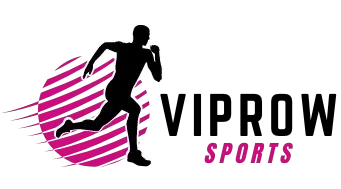Roller balling, also known as roller hockey or inline hockey, is an exhilarating sport that combines the speed and agility of ice hockey with the accessibility of playing on dry land. As a passionate roller baller myself, I’ve experienced firsthand the thrill and challenge of this fast-paced game. In this comprehensive guide, we’ll dive deep into the world of roller balling, exploring its history, equipment, techniques, and the incredible community surrounding this sport.
The purpose of this content is to provide a comprehensive guide and introduction to the sport of roller balling (also known as roller hockey or inline hockey), covering its history, equipment, techniques, strategies, leagues, tournaments, and the vibrant community surrounding it.
The History of Roller Balling
Roller balling traces its roots back to the early 20th century, when ice hockey players began experimenting with playing their sport on dry land using roller skates. The first recorded roller hockey game took place in 1878 in London, England. However, it wasn’t until the 1930s that the sport began to gain popularity in the United States.

In 1940, the Roller Skating Rink Operators Association (RSROA) was formed, which helped standardize the rules of roller hockey. The sport continued to grow throughout the mid-20th century, with the formation of various amateur and professional leagues.
The 1990s saw a surge in the popularity of inline skating, which led to a corresponding increase in interest in roller balling. The International Inline Hockey Federation (IIHF) was founded in 1993 to govern the sport worldwide.
Today, roller balling is enjoyed by players of all ages and skill levels, with thriving leagues and tournaments around the globe. As a dedicated roller baller, I’m thrilled to be part of this rich history and excited to see the sport continue to grow and evolve
Essential Roller Balling Equipment
To get started as a roller baller, you’ll need the following essential equipment:
- Inline skates: Choose skates designed specifically for roller hockey, with a sturdy boot, a low-cut ankle, and wheels suitable for the surface you’ll be playing on.
- Hockey stick: Roller hockey sticks are typically made from composite materials like carbon fiber or fiberglass. Look for a stick with a comfortable grip and a blade curve that suits your playing style.
- Protective gear: Invest in high-quality protective gear, including a helmet with a face cage, elbow pads, gloves, shin guards, and a mouthguard.
- Balls: Roller hockey balls are usually made of hard plastic and have small holes to reduce bouncing. Make sure to choose balls designed for the surface you’ll be playing on.
Recommended Roller Balling Equipment
| Equipment | Beginner | Intermediate | Advanced |
|---|---|---|---|
| Skates | Bauer Vapor X2.7 | Mission Inhaler FZ-5 | Alkali RPD Shift+ |
| Stick | CCM Jetspeed FT4 Pro | Bauer Nexus Geo | True A6.0 SBP Hockey Stick |
| Helmet | Bauer Re-Akt 95 | CCM Fitlite 3DS | Warrior PX+ Helmet Combo |
As an experienced roller baller, I recommend investing in quality equipment that fits well and provides ample protection. Don’t be afraid to try different brands and models to find the gear that works best for you.
Basic Roller Balling Skills and Techniques
Mastering the fundamentals is crucial for any aspiring roller baller. Here are some essential skills to practice:
- Skating: Develop a strong skating foundation, focusing on balance, edge control, and agility. Practice techniques like crossovers, tight turns, and backward skating.
- Stickhandling: Work on your stickhandling skills to maintain puck control while skating. Practice drills that incorporate quick movements and changes in direction.
- Passing and receiving: Accurate passing and receiving are key to successful teamwork. Drill these skills with a partner, focusing on both forehand and backhand passes.
- Shooting: Practice various shooting techniques, including wrist shots, snap shots, and slap shots. Aim for accuracy and quick release.
As a seasoned roller baller, I can’t stress enough the importance of consistent practice. Dedicate time to honing these fundamental skills, and you’ll see significant improvement in your overall game.
Roller Balling Gameplay and Strategy
Roller balling is played with four skaters and one goalie per side, with the objective of outscoring the opposing team. A typical game consists of three 12-minute periods.
Some key strategies to keep in mind:
- Positioning: Maintain proper positioning on the rink, with forwards focused on attacking and defenders ready to protect the defensive zone.
- Communication: Communicate effectively with your teammates, calling out plays and alerting them to potential threats.
- Adaptability: Be prepared to adapt your strategy based on the opposing team’s playstyle and the game’s flow.
- Puck control: Prioritize puck control and smart decision-making, rather than just skating and shooting aimlessly.
As a roller baller, I’ve learned that success on the rink comes from a combination of individual skill and strong teamwork. Work with your teammates to develop plays and strategies that capitalize on your collective strengths.
Roller Balling Leagues and Tournaments
Participating in organized leagues and tournaments is a great way to take your roller balling to the next level. Some popular options include:
- North American Roller Hockey Championship Series (NARCh): The largest roller hockey tournament series in North America, with events for all age groups and skill levels.
- American Inline Hockey League (AIHL): A professional inline hockey league in the United States, featuring top players from around the world.
- Major League Roller Hockey (MLRH): An amateur league with divisions across the United States, offering competitive play for adults.
- National Collegiate Roller Hockey Association (NCRHA): A league for college students in the United States, with regional tournaments and a national championship.
As an avid roller baller, I’ve had the opportunity to compete in various leagues and tournaments. The experience of playing against skilled opponents and being part of a dedicated team is truly unmatched.
The Roller Balling Community
One of the most rewarding aspects of being a roller baller is the strong sense of community within the sport. From local rinks to online forums, roller ballers are passionate about sharing their knowledge, experiences, and love for the game.
Some ways to get involved in the roller balling community:
- Join a local team: Look for teams in your area that welcome players of your skill level. Many rinks have “learn to play” programs or beginner-friendly leagues.
- Attend clinics and camps: Participate in skill development clinics and camps led by experienced coaches and players. These events provide valuable instruction and the chance to connect with other roller ballers.
- Engage online: Join online forums, social media groups, and message boards dedicated to roller balling. Share your experiences, ask questions, and learn from others in the community.
- Volunteer: Give back to the sport by volunteering at local events, coaching youth teams, or helping to maintain your local rink.
As a member of the roller balling community, I’ve formed lasting friendships and have had the opportunity to learn from some of the most talented and passionate players in the sport. Embracing the community aspect of roller balling has greatly enriched my experience as an athlete.
People, Also Searched
Is roller balling suitable for beginners?
- Yes, roller balling is a sport that welcomes players of all skill levels. Many local rinks offer learn-to-play programs and beginner-friendly leagues to help new players get started.
What is the difference between roller balling and ice hockey?
- The main difference between roller balling and ice hockey is the playing surface. Roller balling is played on a dry surface using inline skates, while ice hockey is played on ice using ice skates. The rules and equipment are similar, but there are some slight variations to accommodate the different surfaces.
How can I improve my roller balling skills?
- To improve your roller balling skills, focus on consistent practice and skill development. Work on your skating, stickhandling, passing, and shooting through drills and scrimmages. Consider attending skill development clinics or camps, and seek feedback from experienced players and coaches.
What protective gear do I need for roller balling?
- Essential protective gear for roller balling includes a helmet with a face cage, elbow pads, gloves, shin guards, and a mouthguard. It’s important to invest in high-quality gear that fits properly to ensure maximum protection on the rink.
How can I find a roller balling team or league in my area?
- To find a roller balling team or league near you, start by checking with your local inline skating rinks. Many rinks have information about teams, leagues, and upcoming events. You can also search online for roller hockey organizations in your area, or ask for recommendations from other roller ballers in your community.
Conclusion
Roller balling is more than just a sport; it’s a passion that unites players from all walks of life. As a dedicated roller baller, I’ve experienced the thrill of competition, the satisfaction of skill development, and the camaraderie of being part of a tight-knit community.
Whether you’re a seasoned veteran or a curious beginner, I encourage you to give roller balling a try. With the right equipment, a commitment to practice, and an open mind, you’ll soon discover why this exhilarating sport has captured the hearts of so many athletes around the world.
So lace up your skates, grab your stick, and join me on the rink. The fast-paced, adrenaline-fueled world of roller balling awaits!
Notable Roller Balling Players
| Player Name | Country | Achievements |
|---|---|---|
| Patrick Kane | USA | 2x NARCh Pro Champion, 2x MLRH Champion |
| Mitch Guptill | Canada | 3x NARCh Pro Champion, 2x IIHF World Champion |
| Alejandro Ugalde | Spain | 4x Spanish National Champion, 2x European Champion |
| Thiago Veloso | Brazil | 5x Brazilian National Champion, 2x Pan-American Champion |


